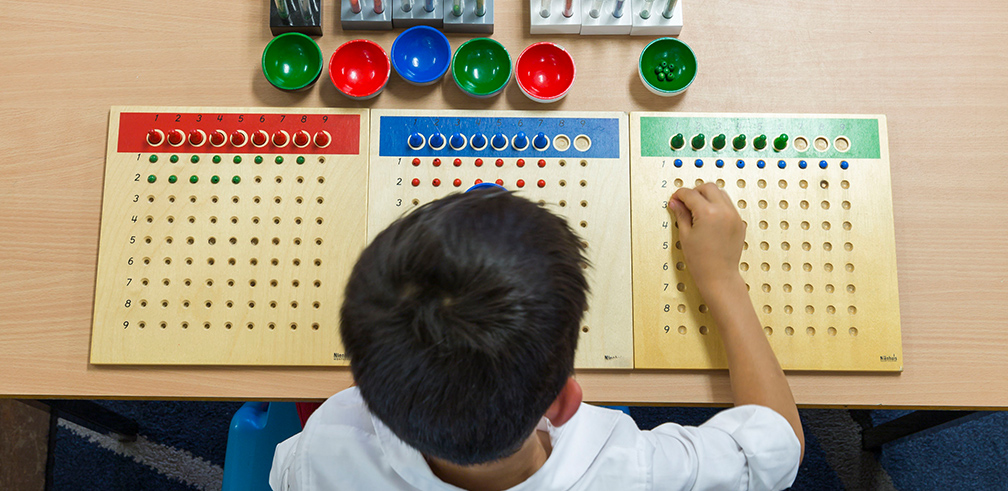Order & Exactness

Xarifa Gabales, Director 6-9 Environment
“We continue to afford children the opportunity
to learn through the activity of the mind.”
Maria Montessori
The very idea of mathematics leads one to imagine a world filled with calculations and possibilities. When Dr. Montessori was observing the work of the children, she said that all human beings had a mathematical mind, that mathematics was innate in all humans.
However, when one considers the world we live in, this does not apply only to mathematics; it is to do with order and exactness, and the human need for these things. The mathematical mind is found and used in every human endeavour. It can be found in mathematics, art, music, language, and more. However, it is also true that if we have an aspect of order and exactness, humans find their greatest order of expression in mathematics.
The subconscious of a child is rich with impressions of a mathematical nature. We continue to offer materials that feed and educate the subconscious so that the children can take the path that leads from the concrete to the abstract with full reason and understanding. The path of knowledge has always been from the concrete to the abstract, where they reach the abstract with full understanding and full reasoning.
In the 6-9 classroom, we see the children choosing from materials that they have had lessons with. We can see the focus and attention they pay to the different steps of the process for each activity and material. The movement required to use the material helps them to visualise and conceptualise what they are doing in order to abstract from their work. The continuous development of their skills can be attributed to the human need to know, to understand, and it is through this work of the hand through the material and through the writing that children come to the abstract understanding.
